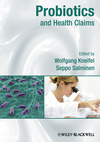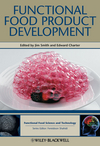Next Generation Probiotics
Designer bugs are being created to boost healthful digestion, immunity and weight management.
Note: This is the second part of a two-part series covering ingredients for digestive health. See the first part (covering prebiotics), “New Ingredients for Digestive Health” in PF’s September issue.
For quite some time, people in the Balkan countries attributed their apocryphal longevity to regular consumption of yogurt and other fermented-milk products. These contained active amounts of certain indigenous lactobacilli strains.
Human digestive systems are colonized by billions of bacteria that assist in maintaining a healthy lifestyle by their symbiotic relationship with humans. The human intestinal tract contains about 300-500 different species of bacteria that can be divided into health-promoting ones, like bifidobacteria and lactobacilli, and into harmful pathogenic ones, such as some species of clostridia, pseudomonas or E. coli.
Although, at one time, little was understood about this relationship and the role probiotic bacteria play in the gut, today, scientific evidence indicates that proper types and levels of these microscopic guests could be associated with a multitude of positive health benefits.
Probiotics are a single or mixed culture of live bacteria that, when administered in adequate amounts via foods or supplements, improve the indigenous microflora of the host. On average, probiotic cultures contain at least 1 million to several billion cells or colony forming units (CFU) per serving. The species and strains differ based on the use and desired benefits of the manufacturers.
Probiotic bacteria produce enzymes, B vitamins, folic acid and also vitamin K in the colon. They also produce chemical byproducts, such as short-chain fatty acids (SCFA), shown to support health and to encourage positive enhancements to gut chemistry.
Probiotics play an indirect but vital role in health, in that they can also help protect against the growth of pathogenic bacteria, such as salmonella or E. coli species and can even produce small amounts of a natural antibiotic-like substance called “bactericine.”
G.I. Joes
In a full-circle return to centuries-old practice, it now is common again for physicians to recommend consuming more probiotic bacteria, usually through supplements. This grew out of using the same formula for the narrow prescription of probiotics following an antibiotic regimen. This was known to replenish a patient’s intestinal microflora with beneficial bacteria.
According to the International Probiotics Assn. (IPA), clinical studies have demonstrated that probiotics can offer numerous health benefits, including a reduction in the occurrence and duration of diarrhea due to rotavirus, antibiotic consumption or from travel; alleviation of lactose intolerance symptoms; reduction of the frequency of recurrent ear and bladder infections; improvement of oral care (e.g., halitosis and gingivitis); and alleviation of food- and skin-allergy symptoms in children. Research is actively being pursued in other disease areas as well, such as the psychological issues of depression and anxiety; cancer; obesity; metabolic syndrome and diabetes; cardiovascular disorders; allergies; atopic dermatitis; inflammatory bowel diseases; and even for lowering of LDL cholesterol. The list of health benefits conferred by active, probiotic bacteria continues to grow, as medical and nutrition science researchers grasp more insight into the importance of the microbiome to systemic health.
“Global health concerns, such as obesity and other ailments related to the digestive system, bones and joints, are rapidly encouraging consumers to focus on beneficial supplements to improve human health,” says Roger Drewes, Ph.D., vice president of technology and chief science officer for Advanced BioNutrition Corp., a science-based product formulation and manufacturing consultancy. “This is helping spur the unprecedented demand for both probiotics and prebiotic ingredients on an international scale.” Adds Drewes, “An active area of scientific research right now is improving probiotic shelf-stability—specifically, trying to extend the effectiveness and viability of probiotic formulations to two years or longer at ambient temperatures. By microencapsulating the bacteria in specially selected materials and carefully controlling the processing parameters, initial probiotic survival at levels around 1011 CFU/g can be achieved, and long-term losses can be limited to less than one log during a product’s shelflife.”
A Bevy of Bacteria
According to Euromonitor International, global sales of probiotic foods and supplements is expected to surge by 50% in the next five years, from $28 billion to around $42 billion in 2016; and U.S. per capita spending on probiotic supplements is expected to nearly double by 2016, overtaking leader Japan.
In 2011, the biggest revenue generators of probiotics were drinkable yogurts (at $14 billion), followed by spoonable yogurts ($11.3 billion), dietary supplements ($2.7 billion) and juices ($135 million). Currently, probiotic yogurts—those with live, active cultures—account for nearly 35% of global yogurt sales. According to Frost & Sullivan’s assessment of the North American probiotics market, dairy-based food products account for 63% of the total market share, followed by dietary supplements at 36%, while infant formulas, cereals and oral care products only account for 1% of total market revenues. There are an incredible number of different species and strains of probiotic bacteria, both natural and recently developed. In fact, there are more than 50 species of lactobacilli alone. Some of the lactobacilli found in fermented foods such as yogurt are: Lactobacillus acidophilus, L. acidophilus DDS-1, Lactobacillus bulgaricus, Lactobacillus rhamnosus GG, Lactobacillus plantarium, Lactobacillus reuteri, Lactobacillus salivarius, Lactobacillus casei, and Lactobacillus gasseri.
More clinical research is needed regarding probiotics and their potential health benefits before any definitive label claims can be made about their effects. However, studies have shown several benefits linked to lactobacillus consumption, including: treating and/or preventing yeast infections, urinary tract infections, irritable bowel syndrome (IBS), antibiotic-related and traveler’s diarrhea; treating lactose intolerance, skin disorders such as fever blisters, eczema, acne and canker sores; and prevention of respiratory infections.
More specifically, some of the studies showed positive outcomes. One of the most extensively studied and best characterized probiotic organisms is Lactobacillus GG. Lactobacillus GG was given to children 5-14 years of age with IBS over a period of eight weeks in a dosage of 3 billion cells, twice per day. This regimen reduced the frequency and severity of abdominal pain. Lactobacillus GG also reduced the risk of traveler’s diarrhea by 47% in a study with 245 people who traveled to 14 worldwide geographic regions.
Big Bifido
There also are approximately 30 species of bifidobacteria. They comprise some 90% of the healthy bacteria in the colon. They appear in the intestinal tract within days of birth, especially in breast-fed infants. Some of the bifidobacteria used as probiotics are: Bifidodbacterium bifidum, B. lactis, B. longum, B. breve, B. infantis, B. thermophilum and B. pseudolongum.
Another species of beneficial bacteria—one that has been used since 1985 as a food ingredient and dietary supplement—is Bifidobacterium animalis ssp. lactis. Numerous clinical trials across a range of demographics, from newborn pre-term infants to the elderly, have shown that doses up to 100 billion CFU/day had no reported negative side-effects.
This strain has been shown to relieve constipation, enhances the immune response after vaccinations in adults and can restore the intestinal microbiota after a round of antibiotic treatment. Moreover, available products containing this strain include bulk powder blends, capsules, chewable tablets, stick packs, sachets and infant formula powders.
In another study, Bifidobacterium infantis 35624 was given to 362 patients with IBS in a four-week period. Patients showed improvement in their symptoms of abdominal pain, bloating, bowel dysfunction, incomplete evacuation, straining and the passage of flatus.
Decreased salivary levels of bifidobacteria have even been associated with dental cavities in adults and children. Bifidobacterium lactis Bb12 is reported to have beneficial effects on metabolism, including lowered serum LDL-cholesterol in people with type 2 diabetes; increased HDL cholesterol levels in adult women; and improved glucose tolerance during pregnancy.
Survival Strategies
There are multiple challenges when formulating food products with probiotic bacteria. The bacteria must be able to survive the acidic pH of the stomach in order to be useful during digestion. Other issues include moisture- and water-activity levels, protection from oxygen and temperature stability. Sensitivity toward temperature is not directly related to the bacterial species but can vary within the species groups. Each strain is unique in its biochemistry and in its robustness against different physico-chemical stressors.
Both lactobacilli and bifidobacteria strains are used extensively in yogurt and other fermented milk applications. Depending on the strain, both species are quite tolerant to low pH in dairy, and lactobacilli contribute to this themselves by acidifying the milk. Most strains of these species survive well down to pH 4.5 and even lower.
Juices of citrus or other low-pH fruits are often much more acidic than acidified milks, often down to pH 3 or lower. This poses a problem for many lactic acid bacteria. Recently, a specially adapted L. casei strain was developed which survives well in low-pH fruit juices up to 10 weeks (refrigerated). It was developed to exactly cater to this market opportunity.
While it is true that probiotic bacteria generally are sensitive to the low pH of the stomach—as well as to other parameters, such as temperature—some bacterial species are highly resistant to these effects. Organisms that form spores are protected by nature’s own microencapsulation system and can survive the assault of both gastric acidity and bile salts.
One such probiotic strain which has received GRAS status by the FDA and which can reach the intestines intact is called Bacillus coagulans GBI-30, 6086. Once past the stomach, it will germinate into viable cells and subsequently proliferate extensively.
This patented strain has been successfully studied in clinical trials primarily looking at digestive- and immune-support endpoints. The organism is currently being used in more than 100 leading food, beverage and companion animal products throughout the world. The spore-forming nature of B. coagulans GBI-30, 6086 allows the organism to remain viable during processing and throughout the product’s shelflife. In fact, it can be incorporated into a variety of foods, ranging from frozen yogurts and baked goods to hot cereals and confections, and even coffee and tea.
Recent research has also shown that B. coagulans GBI-30 can survive, even in juices subjected to a high-pressure pasteurization (HPP) process. HPP can extend the shelflife of the juice up to 10 times and enables wider distribution channels for such products.
Tasteful Strains
Chocoholics will be pleased to know there have been probiotic chocolate bars on the market for several years. One organic product touts the fact that their chocolate bar has both a prebiotic in the form of raw yacon root powder (a source of FOS) and 10 billion live probiotic bacteria as a blend of L. acidophilus, B. bifidum, B. lactis and B. longum.
Other tempting treats include a snack made from raw, organic almonds that have been sprouted. The almonds are then subjected to low-temperature drying and subsequently coated with probiotics at an amount equivalent to 8 billion CFU/packet. The snacks come in four flavors: Cheesy, Truffle Salted, Chocolate and Original. Another company’s chocolate bar product uses inulin as a prebiotic, along with organic brown rice crisps, and claims 6.1 billion live probiotic cultures per bar in the form of B. lactis HN019, L. casei LC-11 and L. acidophilus NCFM.
L. acidophilus NCFM is a probiotic strain that has been used in the food industry for quite some time. It has been widely used in yogurts and other dairy-based products, such as beverages and infant formulas, over the last 40 years because of its safety record and the fact that it is rather easy to use commercially. It survives the trip through the stomach’s low-pH environment, and it is good at adhering to the intestines. The NCFM strain can help with lactose digestion in lactose-intolerant people when taken in adequate amounts.
Both bifidobacteria and lactobacilli tend to survive quite well in chocolate applications. An overage is added and is generally less than one log, but the extra amount needed is dependent on the strain used and the shelflife desired.
Freeze-dried probiotics in powdered form can tolerate temperatures of molten chocolate, and viable counts can still be delivered to consumers at levels of at least 1 billion cells per serving. Typically, the tempering temperature of molten chocolate can vary from 80-82°F for white chocolate and up to 88-90°F for dark chocolate with no milk content.
Another chocolate product containing both probiotics and prebiotics was recently launched. Active D’Lites is a stevia-sweetened chocolate product formulated into multiple flavors, available in bars, bites and ice cream. The chocolate bars claim 20 billion probiotics, added at time of manufacture. Active D’Lites provides a multi-strain combination of five probiotics consisting of 50% (by count) of beneficial bacteria that are adapted to the upper intestine—specifically L. acidophilus NCFM and L. paracasei Lpc-37. The remaining 50% by count is made up of three trademarked bifidobacterium species adapted to the lower intestinal tract. These are: B. lactis Bi-07, B. lactis Bl-04 and B. lactis HN019.
Products hitting the market with live-culture probiotics are multiplying as rapidly as the friendly bacteria themselves. But probiotics should be recognized as more than just some fad. The combination of positive attributes and emerging science related to the panoply of health benefits they convey are quite real and easily applied.
Add to that the rapidly growing evidence of the importance of a healthy digestive system to overall physical well-being, and it can safely be assumed this is but the crest of a long and enduring trend. Top it all off with increasing ability to tailor strains of beneficial bugs to target specific actions and needs, and the future of probiotics is macroscopic.
Looking for a reprint of this article?
From high-res PDFs to custom plaques, order your copy today!







